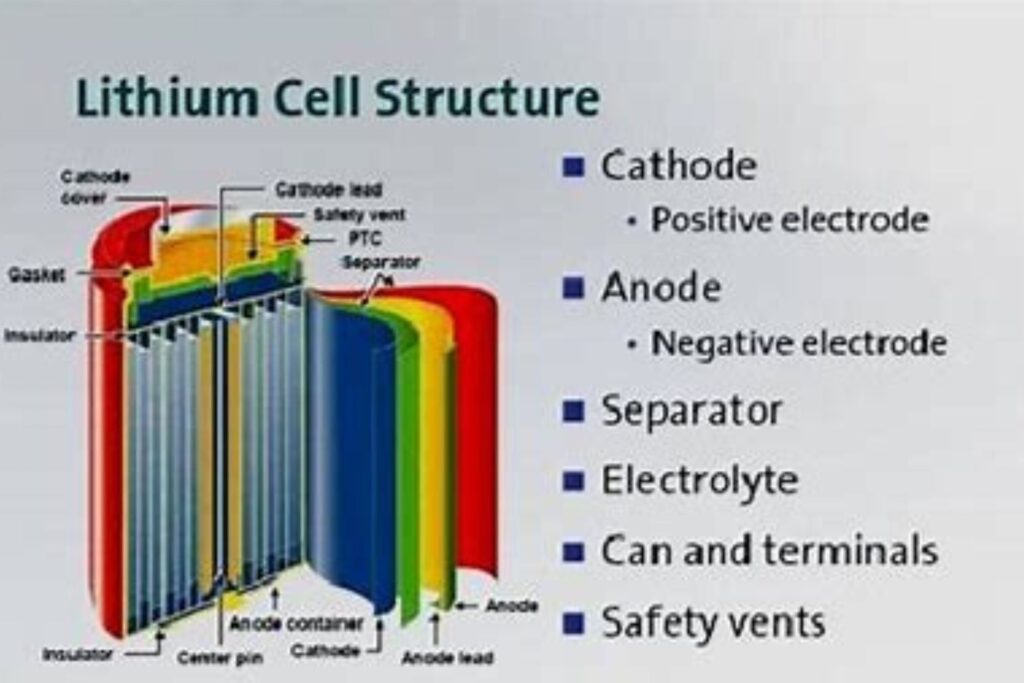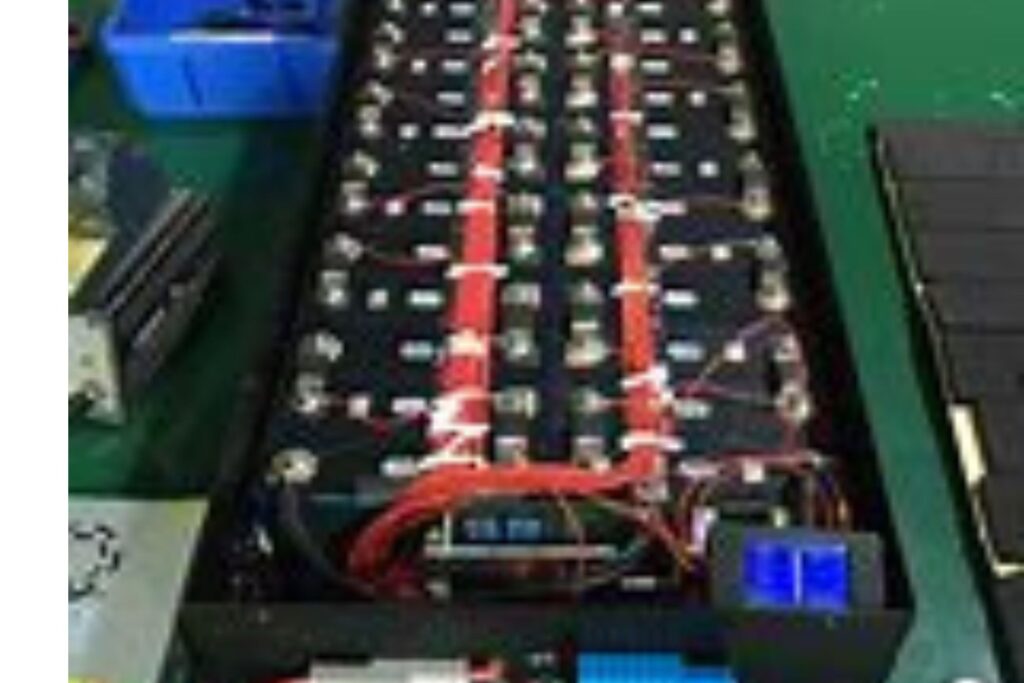
Table of Contents
ToggleLithium Batteries
- Lithium- batteries (LIBs) have become the cornerstone of modern energy storage solutions, powering everything from smartphones to electric vehicles (EVs). Since their commercial introduction in the early 1990s, LIBs have undergone significant advancements in performance, safety, and cost. Their high energy density, lightweight nature, and ability to recharge quickly have made them the preferred choice for a wide array of applications. As we look to the future, the demand for lithium-ion batteries is expected to surge, driven by the increasing adoption of electric vehicles and renewable energy sources.
Historical Context
The development of lithium batteries can be traced back to the pioneering work of scientists like Gilbert Newton Lewis and John B. Goodenough. The first commercial lithium-ion battery was introduced by Sony in 1991, utilizing lithium cobalt oxide as a cathode material. Over the years, advancements in battery chemistry and design have led to significant improvements in energy capacity and cost efficiency. For example, from 1991 to 2018, prices for lithium-ion cells fell by approximately 97%, while energy density more than tripled5.
Current Market Dynamics
As of 2023, the market for LIBs is experiencing unprecedented growth. Sales are projected to exceed 1 terawatt-hour (TWh) for the first time, with forecasts suggesting that demand could reach between 2 to 3.5 TWh by 203013. This rapid expansion is fueled by several factors:
- Electric Vehicles: The automotive industry is shifting towards electric mobility, with LIBs being integral to this transition.
- Renewable Energy Storage: As solar and wind energy become more prevalent, efficient storage solutions like LIBs are essential for managing supply and demand.
- Consumer Electronics: The proliferation of portable devices continues to drive demand for high-performance batteries.
Technological Advancements
The future of lithium-ion technology is poised for transformative changes aimed at enhancing performance while reducing costs. Key areas of focus include:
- Energy Density Improvements: The industry aims to achieve energy densities exceeding 800 Wh/l and 350 Wh/kg by optimizing cell chemistry and design. Innovations such as high-nickel cathodes and silicon anodes are being explored1.
- Cost Reduction: Current targets aim to bring battery pack costs below €100/kWh, which would require a reduction of 30-50% from current levels. This will likely involve using cobalt-free materials and standardizing cell designs1.
- Sustainability Initiatives: With increasing regulatory pressures on sustainability, there is a growing emphasis on developing recycling technologies and circular battery ecosystems. This includes efficient recovery of materials from end-of-life batteries12.
Future Technologies
While lithium-ion batteries are expected to dominate the market in the near term, emerging technologies may redefine energy storage in the long run:
- Solid-State Batteries: These batteries replace liquid electrolytes with solid materials, potentially offering higher energy densities and improved safety profiles. However, challenges remain regarding manufacturing scalability and cost46.
- Lithium-Sulfur Batteries: Promising higher specific energies than traditional LIBs, lithium-sulfur technology faces hurdles related to cycle life and stability7.
- Beyond Lithium: Research is ongoing into alternative chemistries that could supplement or replace lithium-based systems in certain applications. These include sodium-ion and magnesium-ion batteries, which may offer lower costs and greater abundance of raw materials6.
Challenges Ahead
Despite the optimistic outlook for lithium-ion technology, several challenges must be addressed:
- Resource Availability: The extraction of lithium poses environmental concerns and geopolitical risks. As demand grows, securing sustainable sources of lithium will be critical.
- Manufacturing Capacity: The industry must rapidly scale up production capabilities to meet forecasted demand without compromising quality or safety.
- Recycling Infrastructure: Developing effective recycling processes is essential for minimizing environmental impact and ensuring a sustainable supply chain for battery materials.
Conclusion
Lithium- batteries have revolutionized energy storage technology over the past few decades and will continue to play a pivotal role in shaping our energy future. As we move towards a more electrified world, advancements in battery technology will be crucial for enabling sustainable transportation, integrating renewable energy sources, and powering consumer electronics efficiently. While challenges remain regarding resource availability and environmental impact, ongoing research and innovation promise a bright future for lithium-based technologies as they adapt to meet the demands of tomorrow’s energy landscape.
Lithium ion battery for ev cars

Lithium-ion batteries (LIBs) are the predominant energy storage technology for electric vehicles (EVs), offering a combination of high energy density, efficiency, and longevity. As the automotive industry shifts towards electrification, understanding the role and future of LIBs in EV applications is crucial.
Advantages of Lithium- Batteries in EVs
- High Energy Density: LIBs can store a significant amount of energy relative to their weight, typically ranging from 120 to 220 Wh/kg. This high energy density allows for lighter battery packs, which enhances vehicle range and performance compared to traditional lead-acid or nickel-metal hydride batteries24.
- Long Cycle Life: LIBs are designed to withstand numerous charge and discharge cycles while retaining a substantial portion of their capacity. This durability makes them suitable for the long-term use required in EV applications45.
- Low Self-Discharge Rate: Unlike some other battery technologies, LIBs maintain their charge well over time, making them reliable for vehicles that may not be used daily4.
- Temperature Resilience: These batteries perform well across a range of temperatures, ensuring reliability in various environmental conditions4.
Types of Lithium- Batteries Used in EVs
The types of lithium-ion batteries commonly used in electric vehicles include:
- Lithium Nickel Manganese Cobalt Oxide (NMC): This type is favored for its balance of performance, safety, and cost-effectiveness. NMC batteries are widely used in many EV models due to their high energy density and good thermal stability34.
- Lithium Iron Phosphate (LFP): LFP batteries are gaining popularity due to their safety features and lower cost. They have a longer cycle life but lower energy density compared to NMC batteries. LFP batteries are particularly suited for medium-range EVs23.
- Lithium Nickel Cobalt Aluminum Oxide (NCA): NCA batteries offer high energy density and are primarily used by manufacturers like Tesla. They provide excellent performance but come with higher costs and complexity in production34.
Current Market Trends
As of 2023, the global demand for lithium-ion batteries in electric vehicles has surged significantly, with an estimated capacity exceeding 750 GWh. The market is projected to continue growing as more consumers shift towards electric mobility and as governments implement stricter emissions regulations34.
The average battery capacity for available EV models has increased, with many vehicles now featuring battery packs ranging from 21 kWh to 123 kWh, reflecting advancements in battery technology and design3.
Future Developments
The future of lithium-ion technology in electric vehicles is poised for several exciting advancements:
- Solid-State Batteries: These represent a promising evolution of LIB technology, potentially offering up to 50% higher energy density than current liquid electrolyte batteries. Solid-state designs could also enhance safety by reducing flammability risks associated with liquid electrolytes5.
- Recycling and Sustainability: As the demand for lithium-ion batteries increases, so does the need for sustainable practices. Efforts are underway to develop effective recycling processes that recover valuable materials from spent batteries, thereby reducing environmental impact and dependence on raw material mining23.
- Alternative Chemistries: Research into alternative battery chemistries, such as sodium-ion batteries, aims to alleviate concerns over lithium supply chain issues. Sodium-ion technology could provide a more sustainable option while maintaining acceptable performance levels34.
Challenges Ahead
Despite their advantages, lithium-ion batteries face several challenges:
- Resource Constraints: The extraction of lithium and other critical materials poses environmental challenges and geopolitical risks. Securing sustainable sources of these materials will be essential as demand continues to rise34.
- Cost Management: While prices have declined significantly over the past decade, further reductions are necessary to make EVs more affordable for consumers. Innovations in battery chemistry and manufacturing processes will be key drivers in achieving this goal23.
- Safety Concerns: Although modern LIBs are designed with safety features, incidents of thermal runaway remain a concern. Ongoing research into battery management systems and new materials aims to enhance safety further56.
Conclusion
Lithium-ion batteries have established themselves as the backbone of electric vehicle technology due to their high energy density, longevity, and efficiency. As the market continues to evolve, innovations such as solid-state batteries and improved recycling methods will play critical roles in shaping the future landscape of electric mobility. Addressing challenges related to resource availability and safety will be paramount in ensuring the sustainable growth of this vital technology within the automotive sector.
